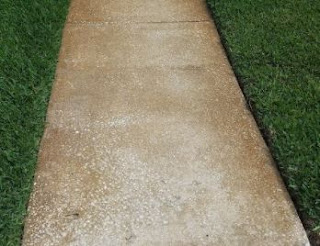Marble floor restoration in Bracknell
Marble floor restoration in Bracknell
Marble is one of the most sought-after stones on the market
because of both its beauty and its high resistance to damage. There are times
when marble restoration services like ours are needed because marble floors are
not completely indestructible.
When it comes to marble tile restoration, Tile Cleaning
Agents has the know-how to get the job done right. When your marble flooring is
in need of some TLC, here are some tips from our team to help you out.
Even if you can't prevent or control any damage, our marble
repair team is always ready to assist you in any way possible. Avoid panicking
or doing anything that could worsen the situation.
Removing Marble Scratches
If your grandchildren come over for tea and instead of using
crayons on paper they prefer to draw with little sharp items into the soft
stone, you'll have a scratch on your marble. The best thing to do in this
situation is to contact in the professionals, as our marble restoration
services team can have the surface re-polished within an hour.
When tiles are small this creates a lot of potential for
lippage. This is when the machine can’t reach the lower tiles. Before the
larger machine could be brought in, these scratches had to be cleaned up
manually because of the lippage.
Marble with a Vinegar Stain
It doesn't matter how quickly you wipe up an acidic spill on
your marble floor; it's already too late by the time it reaches the surface. We
sand and polish stone to remove vinegar stains from marble, a process that is
only possible because of the stone's thickness and resilience. We can use
hand-tools, but this could make the targeted region deeper than surrounding
stone, so it's recommended to utilise a larger floor-rotary machine so that the
repaired marble can be seamlessly integrated with other tiles. "Feathering
in" is a term used to describe this method.
Marble-like qualities can also be found in limestone, particularly
when the stone is dense and polished. When the light bounces across the
surface, the spilling stain may be clearly seen even if you're standing above
it. After the service you'd never know there had been a spill on this floor!
Marble Floor Efflorescence
When salt moves through marble, it creates a white hue on
the tile's surface, which is known as efflorescence. Marble tiles which have
recently been installed and the tiler may have forgotten to use an impermeable
glue that would otherwise separate the cement, which contains the salts, from
the permeable stone above. Whenever the floor gets wet the water dissolves the
salts which is then form a solution which is wicked to the surface of the stone.
As the solution dries the salts crystalise at the surface. These crystals need
to be removed on a regular basis until the salts beneath the tiles are
depleted.
It can take months or even years for cement to harden.
Cement dehydration can cause some movement in tiles, which could cause them to
shatter and release their efflorescence at the same time.
Correcting Marble Floor Lippage
Lippage, which occurs when one or more tiles are put higher
than the rest of the tiles, is another problem that our marble restoration team
encounters on a regular basis. Tile polishing materials can be damaged even if
there is only a minor amount of protrusion.
Lippage can cause the diamond pads, which marble restoration
professionals use to restore the shine to stone floors, to crack throughout the
service because they are made of resin, which is hard and can't bend. Because
the discs were unable to reach the lower area of the tiles around the borders,
this resulted in the tiles not being sanded properly. Using this technique, you
end up with an unwanted picture-frame effect.
It's for this reason that softer sponge-type pads have been
developed by several vendors, which allow the restoration experts to reach the
lower areas of tiles. However, instead of a super-flat mirror finish, these
types of pads generate a surface with an orange-peel effect and low clarity of
reflections.
As a result, there is a noticeable decrease in sharpness and
a noticeable increase in lumpiness in the finished product. Softer stone
particles are knocked off by the sponge's gentle pressure, which only leaves
behind the more durable stone. An unattractive appearance can be achieved in
some limestone tiles that are made up of rough tiny particles. On the other
hand, Carrera marble with its beautiful wavy patterns can produce a lovely velvety
texture, revealing the gentle curves of the stone. This is both visually and
tactilely appealing to the eye and the touch. This tumbled effect is often created
for gneiss stone kitchen counter tops.
Marble restoration is often better left alone until
professional services like ours can be called upon, as we've seen on a number
of occasions. The last thing you want to do is inflict more damage on the
situation by attempting to fix it yourself.
Several widely recognised professionals have taught us at
Tile Cleaning Agents about marble repair processes. A safe solution to deal
with these challenges has been developed.
Just as importantly, we're able to provide that mirror
quality independent of any damage caused by spills or lippage. The reason our
prices are so low is NOT because we sacrifice quality, but rather because we
have learned how to be more efficient! Consequently!
If You Have Marble Repair Concerns, Please Contact Us! Get
in touch with us right away!
Just fill out the form on our website here:
https://www.tilecleaningagents.co.uk/ and we'll get back to you as soon as
possible with a free estimate for your marble restoration needs. Call us at
01344 374671 or text us at 07919 624005 to get in touch with us directly today.



Comments
Post a Comment